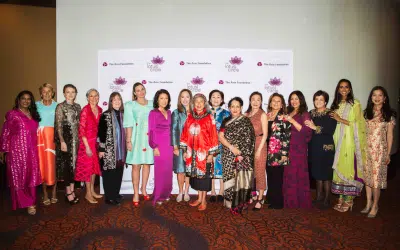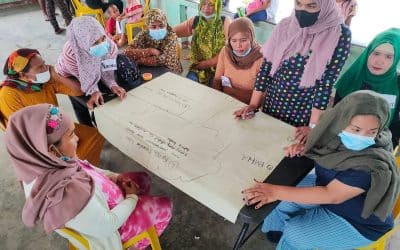InAsia
Insights and Analysis
Budget Transparency Replacing Budget Secrecy in Myanmar
May 22, 2019
Myanmar’s ruling Union Revolutionary Council, led by General Ne Win, published the country’s first public budget report in the 1963/64 fiscal year, with the title Pyi Thu Thot A Si Yin Khan Sar, or Citizen’s Report. This forward-looking exercise in democratic engagement and government transparency presented a profile of GDP growth, government revenues, and expenditures in areas of national concern such as health care and education.
Unfortunately, the Citizen’s Report was a one-time experiment—an exception, not the rule—and public information about government budgets has been virtually nonexistent for most of Myanmar’s postindependence history. The independence-era Burma Socialist Party, and the military regime that replaced it, did publish gross budget information in government-owned newspapers like the Global New Light of Myanmar and the Mirror and Myanmar Alin, but this aggregated data was virtually useless for detailed analysis, and there was little meaningful budget information in the public domain.

Launching the Kayin State Citizen’s Budget in Hpa-An, 2018
While Myanmar’s transition to democracy is still at an early stage, democratic governments since the adoption of the 2008 Constitution, hoping to encourage public participation, have gradually stepped up the public release of budget documents to increase the transparency of the fiscal process. In 2015, the USDP government of President Thein Sein began publishing the Citizen’s Budget, an accessible, macroeconomic summary of national, or Union, fiscal policy and public financial management that includes government revenues and expenditures, deficits and international debt, spending on health care and education, and other aspects of the Union and state/region budgets. In 2017, with support from The Asia Foundation, Myanmar’s state and region governments began publishing their own Citizen’s Budgets. Tanintharyi Region, Bago Region, Ayeyarwady Region, and Kayin State were the first to do so.
In Bago region, with technical support from the Renaissance Institute and The Asia Foundation, the regional government released a 2018 pre-budget statement, a policy document that includes budget priorities, revenue forecasts, and planned expenditures for the next fiscal year. A Union pre-budget statement is also in the works. These pre-budget statements encourage meaningful public participation by improving public awareness of the government’s budget strategy and opening a channel for public input early in the budgeting process.
The annual publication of subnational Citizen’s Budgets and pre-budget statements marks a historic change in Myanmar after decades of official budget secrecy. Now, not only are subnational governments sharing budget and planning information with the public, but they are striving to present that information in digestible form. At first, there was some concern that sharing budget information with citizens would overwhelm government agencies with negative feedback. The Asia Foundation supported a series of small-scale launches and distributions to selected civil society organizations. Eventually, positive feedback from citizens and the media encouraged the government to move forward. State after state and region after region began promoting their Citizen’s Budgets with public launches, workshops, and meetings.

A Citizen’s Budget workshop
Civil society organizations and citizen groups have begun to use this new budget information to take a more active role in decisions affecting local development. In Kayin State, CSOs became curious about the allocation of funds for ongoing construction projects in several townships, and they wanted to discuss it directly with the state government. The Kayin State budget director was hesitant. He had never discussed the state budget with private citizens. He agreed to a public launch of the first Citizen’s Budget, but he did not want a question-and-answer session. The launch went smoothly, however, and he was encouraged by the media’s positive response. A year later, at the launch of the second Citizen’s Budget, both the Kayin Budget Department and the Development Affairs Office were eager for public engagement. They used the opportunity to explain each page of the Citizen’s Budget, discussed the issues, took questions, and received citizen feedback.
During the launch of Kayin’s FY 2018/19 Citizen’s Budget, CSOs pointed out that forestry production revenue was too high. Anti-deforestation policy in Kayin State called for forestry production to be lower than the previous year. The government explained that fines and confiscations of newly discovered illegal logging sites had temporarily increased logging revenues. It is encouraging that CSOs used the opportunity to closely examine government revenues and expenditures, and that they were ready to raise their voices. At the end of the launch, the Kayin budget director shared his email address and phone number with all participants and encouraged them to ask follow-up questions anytime.

A collection of state/region Citizen’s Budgets
By the end of 2019, all of Myanmar’s 14 states and regions will be producing annual Citizen’s Budgets. At the time of this writing, Bago and Tanintharyi Regions have already released pre-budget statements. In Tanintharyi, the Budget Department receives phone calls every week from concerned citizens with budget-related questions and requests. In Kachin, the government held a second Citizen’s Budget launch in one of the most remote towns in the state’s north to make sure they were reaching the hardest-to-reach citizens.
Subnational Citizen’s Budgets and pre-budget statements are an important step towards greater budget transparency and accountability at the state and region level. Budget transparency helps governments to be more accountable to the public, making their budgets responsive to citizens’ needs and public oversight, and it allows CSOs to use their expertise to detect government mismanagement, flag poor spending decisions, and promote people-centered planning. Government budgets affect everyone, and Citizen’s Budgets make the budgeting process everyone’s business.
Win Po Po Aung is a senior program officer for The Asia Foundation in Myanmar. She can be reached at [email protected]. The views and opinions expressed here are those of the author, not those of The Asia Foundation.
About our blog, InAsia
InAsia is posted and distributed every other Wednesday evening, Pacific Time. If you have any questions, please send an email to [email protected].
Contact
For questions about InAsia, or for our cross-post and re-use policy, please send an email to [email protected].The Asia Foundation
465 California St., 9th Floor
San Francisco, CA 94104
The Latest Across Asia
Program Snapshot
May 2, 2024
News
April 25, 2024
Program Snapshot
April 18, 2024

2024 Lotus Leadership Awards
The Lotus Leadership Awards recognize contributions towards gender equality in Asia and the Pacific







0 Comments